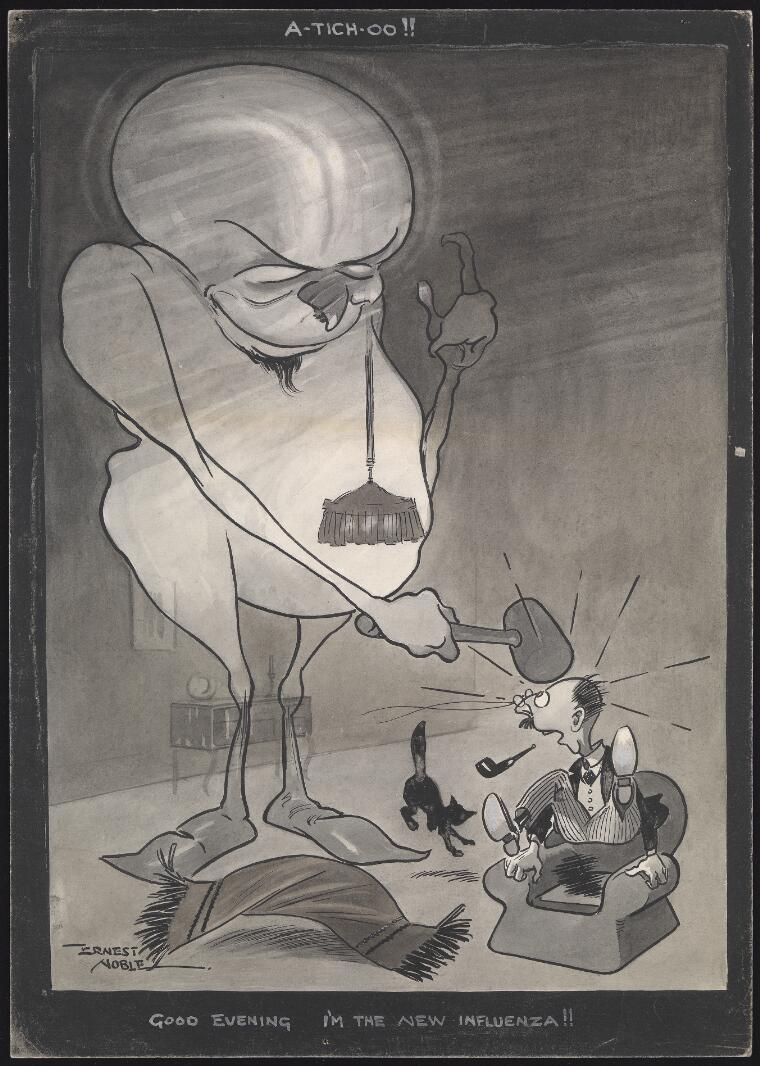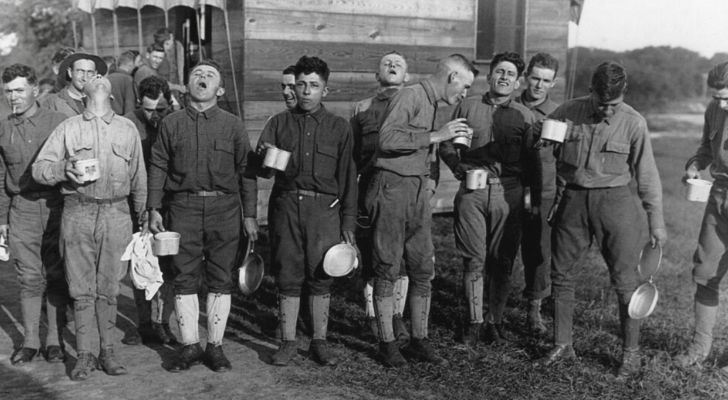
While this may be shocking to some reading this blog today, we can begin to get a sense of some of the often-overlooked individual responses to the pandemic, but the choices around suicide were often more complex. Newspaper headlines described individuals who were ‘crazed by influenza’, and who turned to suicide as a ‘cure’. Within this context, the c.1918 image of a ‘new flu’ monster hitting a man on the head is particularly apposite, especially as we might expect images to be much clearer in their links between the flu and its appalling symptoms of respiratory failure. In each of the countries we have explored, we have found evidence of people labouring under post-influenzal depression and of lives made unbearable, even after the infection had passed.

This, however, was to underestimate the virus’s longer-term effects on its victims’ mental health. And I state it because (for want of faith in this respect) not a few suicides have occurred. … there is no need for despair about one's weakness or depression-as the poisons of the disease are eliminated from the system the accustomed vigour and ability are bound to return. In October 1918, in one Australian newspaper, a commentator on the Spanish Flu was at pains to stress: Through an exploration of historic newspapers from Britain, Ireland, Australia, and the United States, we can see that people at the time saw a clear correlation between pandemics and suicide, even in the nineteenth century.ĭuring the ‘Russian Flu’ of the 1890s, for example, lethargy, lassitude, nervousness, neurasthenia and psychosis were amongst the list of psychological impacts well-known to physicians, but there was often the more general hope that these would be temporary or short-lived. What might an exploration of such behaviours in the wake of a historical pandemic offer to researchers and, more pointedly, to those fetishizing medicine without recourse to wider experience and knowledge? Professor Chris Whitty, England’s Chief Medical Officer, recently said that ‘science will in due course ride to our rescue’, and others have since more-floridly echoed his rhetoric but what if that jockey has no saddle to steady them and no insight as to what comes after jumping the fence?īuilding on recent historical research at the University into coroners inquests, as well as expertise in the history of psychiatry here and at the University of Huddersfield, we have begun to consider the influence that previous pandemics have had on mental health. The Institute for Mental Health at the University of Birmingham holds vital expertise in contemporary self-harm and suicidality. Whilst Spanish Flu and COVID-19 are very distinct viruses, they can be seen to echo one another in their complex impact on mental health.


What is also evident is that influenza was in many cases not a lone actor, but part of a cast that included personal, social and economic factors. Indeed, while there is no evidence, thus far, to show that COVID-19 has had such an impact, there is extensive historical evidence to demonstrate that the illness was considered complicit in numerous suicides around the globe. What is less well-known is that many others succumbed to its effects on mental wellbeing and died by suicide as a result.

In 1918-19, the ‘Spanish Flu’, sometimes also known as the ‘Spanish Lady’, is estimated to have killed over 50 million people worldwide. Attribution 4.0 International (CC BY 4.0)ĭr. Share this page Share on Twitter Share on facebook Share on linkedin Share on emailĪ monster representing an influenza virus hitting a man over the head as he sits in his armchair.


 0 kommentar(er)
0 kommentar(er)
